Next in our 21st-Century Architecture: 25 Years 25 Buildings series we examine SOM‘s Burj Khalifa – the most significant building completed in 2010 and still the world’s tallest skyscraper.
“In 2010, when the Burj rose from the sand dunes of the Arabian desert, it announced the emergence of Dubai as a global powerhouse,” wrote Julie Satow in the Wall Street Journal last year.
Indeed, it is difficult to think of another building that has done a more effective job of putting its city on the map since Frank Gehry’s Guggenheim Museum Bilbao completed in 1997.
Dubai’s meteoric rise to become a city of undisputed global significance has been one of the most distinctive geographical phenomena of the last 25 years.
The Burj Khalifa, then, reasserted the power of skyscrapers and the ability of architecture to placemake.
Rising 828 meters above Downtown Dubai, the mixed-use tower transformed the landscape of skyscraper design when it topped out in January 2009, dramatically surpassing Taiwan’s 508-metre-tall Taipei 101, which formerly held the title of the world’s tallest building.
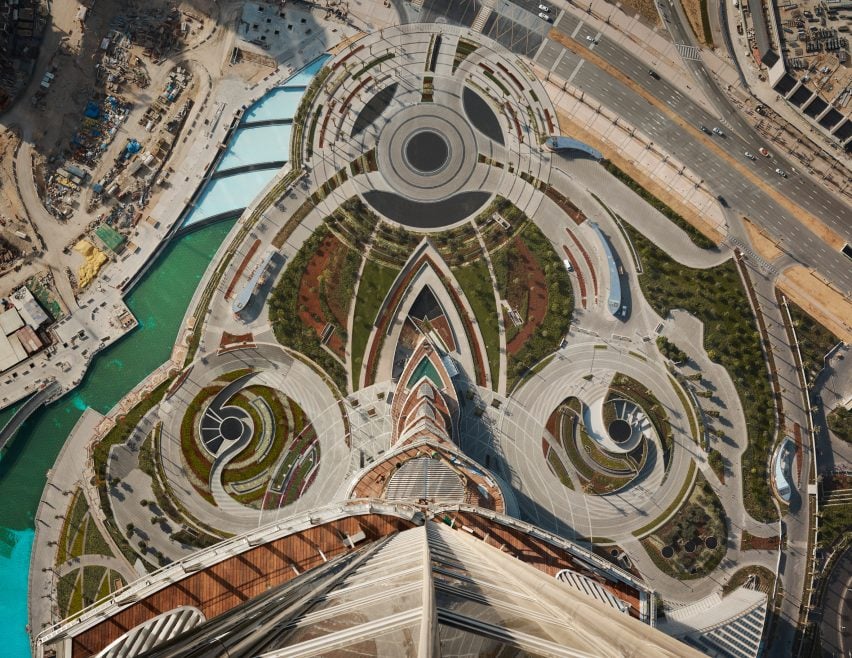
Fifteen years after it officially opened on 4 January 2010, the 160-storey Emirati megatall tower has comfortably maintained its ranking, highlighting the landmark’s enduring significance on the global stage. It is roughly three times the height of Paris’s Eiffel Tower.
Architect Adrian Smith designed the neo-futurist Burj Khalifa, made of reinforced concrete and clad in vertical glass fins, while practicing at Chicago-based office SOM.
The skyscraper is supported by a central buttressed core, an architectural invention by the building’s lead engineer Bill Baker first applied to Seoul’s Palace Tower III.
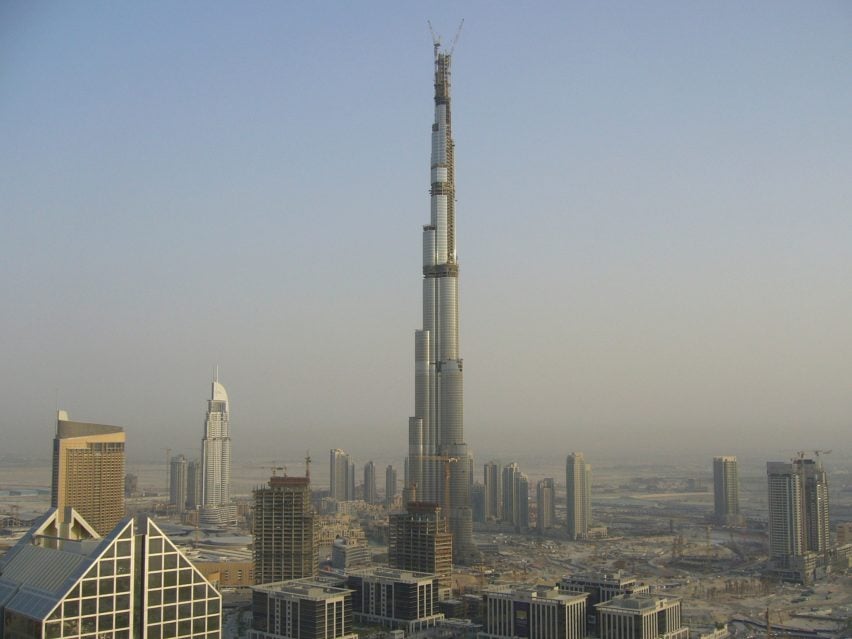
Sculptural wings fan out from the Burj’s Y-shaped tripartite floor plan, built into a solid-rock foundation. The wings taper upwards in 27 setbacks, which create outdoor terraces, gradually decreasing the tower’s cross-section and concluding in a record-breaking steel spire.
This three-pronged design was chosen to echo the hymenocallis, or spider lily – a desert flower found across the region. Smith was also inspired by examples of Islamic architecture; in particular, the 9th-century Great Mosque of Samarra in Iraq, defined by its ancient minaret encircled by a distinctively bottom-heavy spiralled ramp.
The Burj Khalifa’s sturdy foundations were, and remain, a feat of engineering. Each of the skyscraper’s wings contains its own concrete core and perimeter columns, which buttress the others thanks to a six-sided central core, creating a torsionally stiff tower.
The stepped shape helps to confuse the windAdrian Smith in the Wall Street Journal
“This innovative structural solution allows the Burj to be remarkably tall and remarkably thin, with one-third less square footage than [Chicago’s] steel-framed Willis Tower even though it almost doubles Willis’s height,” wrote Blair Kamin in the Architectural Record in 2010.
“This skyscraper looks like a skyscraper, its elegant, exultant verticality providing Dubai’s random clumps of high-rises with an unmistakable centre of the tent,” he added.
The Burj’s aerodynamic profile means that the building can sway up to two metres in the wind, reducing the risk of structural damage or collapse.
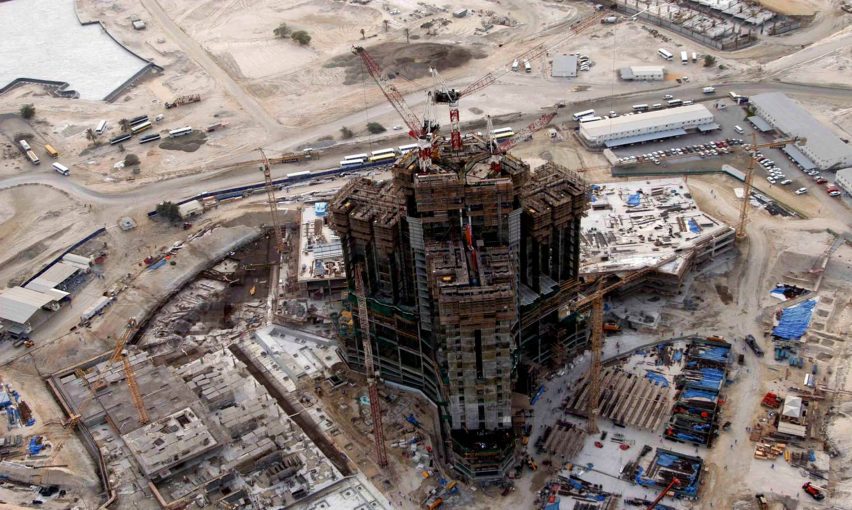
“The stepped shape helps to confuse the wind,” Smith told the Wall Street Journal in 2011. “The wind doesn’t have an opportunity to organise very rapidly because of the steps.”
It is impossible to consider the significance of the Burj without acknowledging the precarious economic backdrop against which it was achieved.
Originally called Burj Dubai, the skyscraper was renamed the Burj Khalifa after the former ruler of Abu Dhabi, Sheikh Khalifa bin Zayed bin Sultan Al Nahyan, granted Dubai a $10 billion bail-out loan to complete the project. After a sustained period of rapid architectural expansion around the millennium, the emirate was hit hard by the global financial crisis of the late 2000s.

Writing in the Financial Times on the day of the building’s official opening, Simeon Kerr called the Burj Khalifa “a testament to a boom-time mentality that gripped the city in the first decade of this century – but one that has been replaced by a more sombre reality”.
“It would be shortsighted to conflate the messy circumstances surrounding the Burj Khalifa’s completion with the tower’s exhilarating and surprisingly refined architecture,” agreed Kamin.
“And such a dismissal would ignore previous supertall sagas,” he added, referring to the 1929 Wall Street Crash that threatened the success of New York City’s Empire State Building, which prevailed against the odds to become arguably the world’s most recognisable skyscraper.
The Burj is an almost perfect representation of Dubai’s own complexities and contraditionsLandon Thomas Jr in the Architectural Record
“To be sure, the world’s record-breaking skyscrapers, such as Burj Khalifa, often presage recession,” continued Kerr. “But with time these buildings have gone on to form the centrepiece of thriving economic centres.”
The most significant building of 2010 is not without controversy. In 2006, 2,500 migrant workers, mostly from South Asia, went on strike and rioted to protest against their poor living conditions and lack of pay while constructing the Burj Khalifa.
Subsequent investigations brought global attention to working conditions in the United Arab Emirates, while other commentators were quick to express a lack of faith in the skyscraper’s sustainability credentials.
“The Burj is an almost perfect representation of Dubai’s own complexities and contradictions,” summarised Landon Thomas Jr in the New York Times on the day of the day of the skyscraper’s official opening.
Since its opening, the landmark has attracted visitors from across the globe, who have ascended to the world’s highest observation deck on the building’s 148th floor to take in sweeping views of the cityscape.
Actor Tom Cruise scaled the building when performing stunts seen in the 2011 Mission: Impossible film Ghost Protocol, while renowned urban climber Alain Robert reached the Burj’s spire the same year.
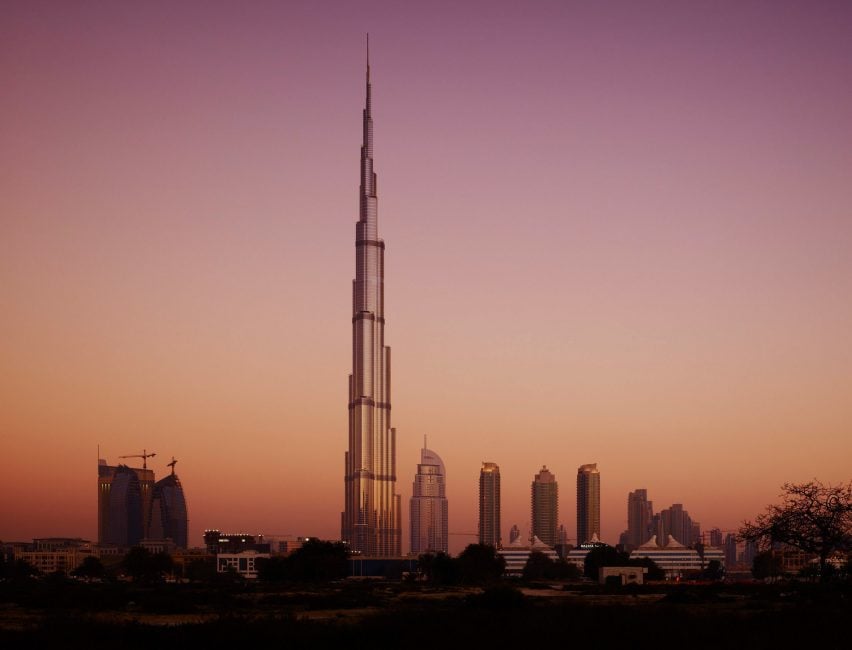
The Burj Khalifa marks the first time that the Arab world has hosted the tallest building on Earth since Egypt’s Great Pyramid of Giza, built over 4,000 years ago, and its height is yet to be beaten.
That looks likely to change in the coming years as other places – notably Saudi Arabia – seek to mimic its success, but many critics agree that the Burj’s distinctly thin and stepped design will ensure the skyscraper’s enduring reputation.
“Building booms and busts come and go, as do the temporary wearers of the world’s-tallest-building crown. What matters, in the long haul, is the artistry that separates skyscrapers that are merely yardstick-tall from those that make of their tallness a smashing aesthetic virtue,” wrote Kamin.
“And the Burj Khalifa easily meets – and exceeds – that standard, soaring in both height and design quality above Dubai’s often-ludicrous collection of architectural cartoons,” he added.
“I think human nature is always going to go after spectacular achievements,” reflected Smith in 2011. “As long as they can, they will.”
Did we get it right? Was the Burj Khalifa by SOM the most significant building completed in 2010? Let us know in the comments. We will be running a poll once all 25 buildings are revealed to determine the most significant building of the 21st century so far.
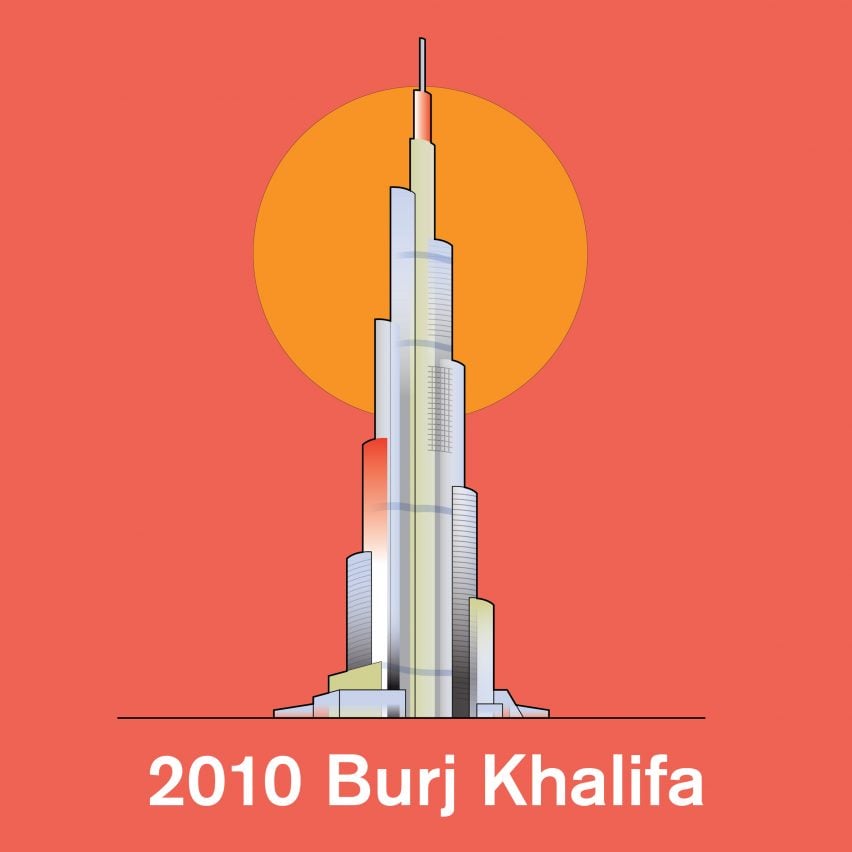
This article is part of Dezeen’s 21st-Century Architecture: 25 Years 25 Buildings series, which looks at the most significant architecture of the 21st century so far. For the series, we have selected the most influential building from each of the first 25 years of the century.
The illustration is by Jack Bedford and the photography is by Nick Merrick unless stated otherwise.
21st Century Architecture: 25 Years 25 Buildings
2000: Tate Modern by Herzog & de Meuron
2001: Gando Primary School by Diébédo Francis Kéré
2002: Bergisel Ski Jump by Zaha Hadid
2003: Walt Disney Concert Hall by Frank Gehry
2004: Quinta Monroy by Elemental
2005: Moriyama House by Ryue Nishizawa
2006: Madrid-Barajas airport by RSHP and Estudio Lamela
2007: Oslo Opera House by Snøhetta
2008: Museum of Islamic Art by I M Pei
2009: Murray Grove by Waugh Thistleton Architects
2010: Burj Khalifa by SOM
This list will be updated as the series progresses.

